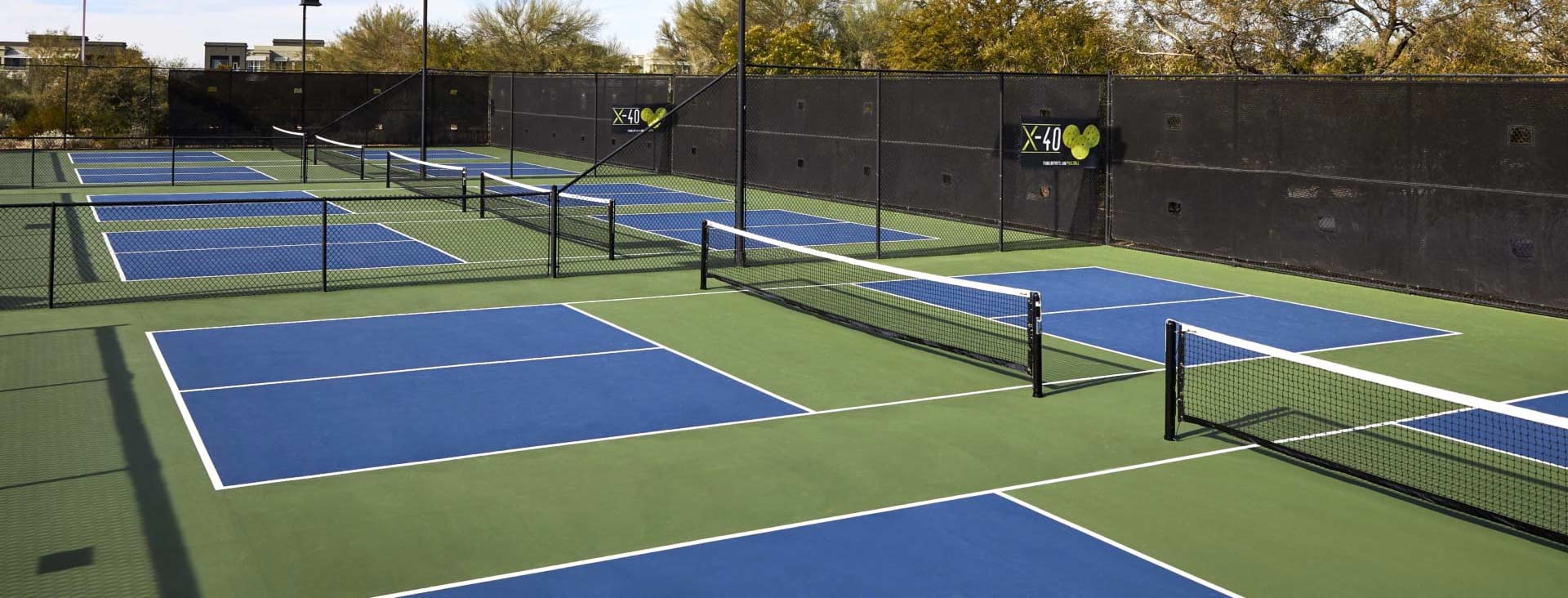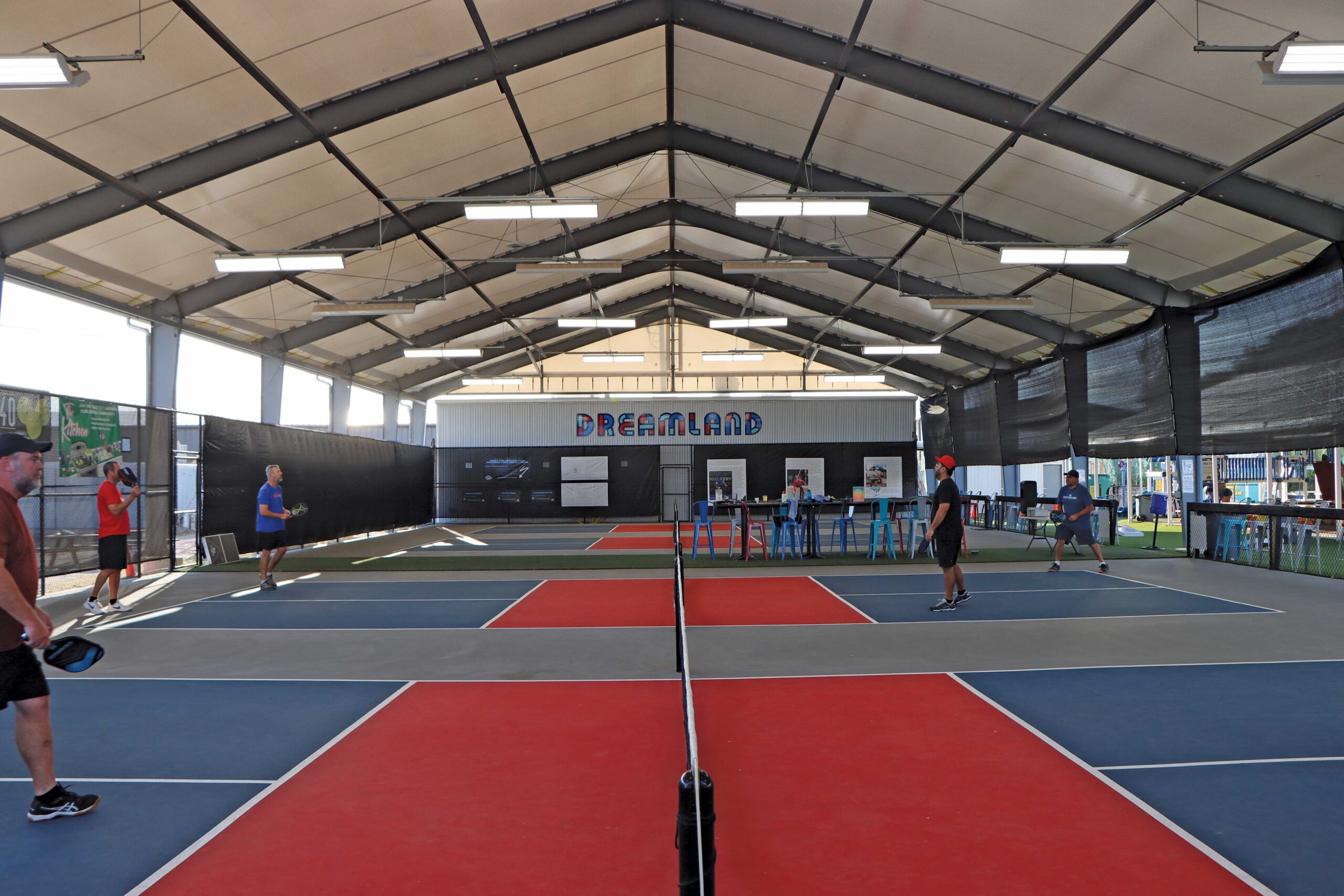The Leading Pickleball Judiciaries Layout & Building And Construction Specialists in Illinois and Midwest
The Leading Pickleball Judiciaries Layout & Building And Construction Specialists in Illinois and Midwest
Blog Article
Trick Variables in the Building And Construction of Pickleball Judiciaries: From Site Selection to Last Finishes
The construction of pickleball courts encompasses an array of important factors, starting with the choice of a suitable website that stabilizes ease of access with environmental considerations. Vital aspects such as court measurements, surface materials, and water drainage systems dramatically impact not just the high quality of play however also the longevity of the facility.
Website Selection Requirements
When embarking on the building of pickleball courts, it is necessary to toenail down the site choice standards that will certainly make sure ideal playability and availability. The area has to be easily reachable for players, ideally positioned near houses or area centers, to urge involvement.
Moreover, the terrain needs to be degree and stable, as uneven ground can lead to safety and security hazards and impact gameplay. Ample drain is also crucial; choosing a website with excellent water drainage will certainly help maintain court conditions during damaging weather condition.
Another essential consideration is the schedule of utilities. Access to electrical power and water is needed for lights and maintenance purposes. In addition, proximity to auto parking centers is important, assisting in simple gain access to for gamers and viewers alike.
Environmental factors can not be ignored; natural shade from trees can improve gamer convenience, while direct exposure to dominating winds may interrupt play. Last but not least, zoning regulations and community support ought to be considered to ensure that the job aligns with local standards and gets the backing it requires for successful implementation. By meticulously evaluating these standards, stakeholders can produce an inviting and practical atmosphere for pickleball lovers.
Court Capacities and Design
To make certain ideal gameplay and adherence to laws, the dimensions and layout of pickleball courts need to be thoroughly specified. A standard pickleball court determines 20 feet in width and 44 feet in size for both songs and doubles play. The recommended format consists of a non-volley zone, typically described as the "cooking area," prolonging 7 feet from the web on either side. This area is important, as it influences gamer positioning and shot option - Illinois and midwest.
The net height is set at 36 inches at the sidelines and 34 inches at the facility, producing a minor dip that impacts sphere trajectory. Court markings are equally crucial; lines should be 2 inches large and distinct in color to make certain exposure.
Furthermore, a buffer area surrounding the court is recommended, generally prolonging 5 to 10 feet beyond the sidelines and baselines to accommodate gamers' movements and boost safety. Proper design and measurements not just ensure compliance with official policies but likewise enhance the overall having fun experience, accommodating both recreational and competitive play. Cautious preparation in these areas is critical to the effective construction of pickleball courts.
Surface Material Options
Choosing the best surface material for pickleball courts is important for ensuring optimum player performance and safety. The choice of surface can significantly affect gameplay, consisting of ball bounce, traction, and player convenience.
There are several choices offered, each with its distinct attributes. Asphalt is a prominent choice due to its sturdiness and reduced maintenance requirements. It offers a solid playing surface area that can endure numerous weather yet may need periodic resurfacing.
Concrete is another commonly made use of product, supplying exceptional longevity and a smooth finish. It enables for constant ball bounce but can be hard on players' joints, making it my sources less preferable for long-lasting play without appropriate padding.
For those seeking enhanced comfort and shock absorption, supported acrylic surfaces provide a viable option. These surface areas integrate a base layer with an acrylic overcoat, providing enhanced grip see it here and a softer feel, which is helpful for lowering the danger of injuries.
Last but not least, synthetic grass is getting grip, particularly for multi-purpose facilities. Its versatility and lower upkeep requires make it an attractive option, though it may not supply the same ball action as typical hard courts. Mindful factor to consider of these options will certainly ensure an ideal playing environment.
Drain and Lighting Considerations
Correct drain and efficient lighting are crucial elements in the construction of pickleball courts, significantly affecting both playability and security. Adequate water drainage systems avoid water buildup, which can lead to slippery surface areas and damages to the court structure.
Lighting is equally essential, particularly for courts meant for night usage. Proper lighting boosts visibility, ensuring that gamers can see the ball clearly and minimizing the risk of crashes. The positioning of illumination fixtures should be purposefully intended to remove darkness and offer even distribution of light throughout the court. LED lights are recommended Discover More Here for their energy effectiveness and long life, supplying bright illumination while reducing operational expenses.

Final Surfaces and Upkeep
After addressing water drainage and lights factors to consider, attention transforms to the last surfaces and ongoing upkeep of pickleball courts. Typical options include acrylic layers and specialized sporting activities surfaces that provide optimum traction and padding.

Seasonal maintenance may consist of resurfacing every few years, relying on use and ecological aspects. Correctly maintaining nets, court lines, and bordering areas is equally important to give a safe and pleasurable having fun experience. By spending in top quality coatings and sticking to an organized upkeep timetable, facility proprietors can guarantee their pickleball courts remain in excellent condition for several years to come.
Verdict
In final thought, the successful construction of pickleball courts hinges on thorough interest to several key aspects. Top quality finishes and a robust upkeep schedule are crucial for protecting the court's problem, improving the overall experience for players and spectators alike.
Report this page